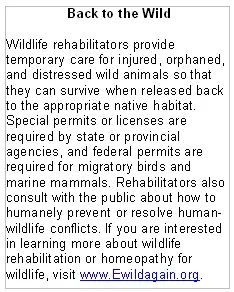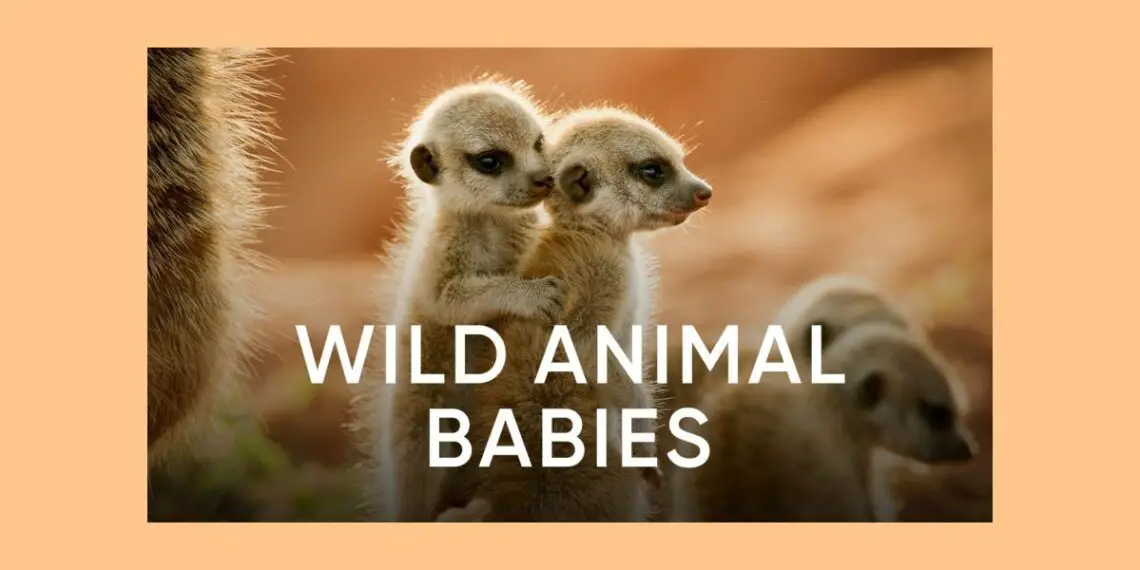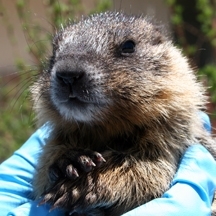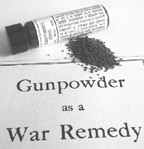Homeopathy Can Help Orphaned Wildlife
Spring is here! (If that’s not yet true for you, wait a little while — it’s just around the corner.) Birds are chirping, plants are sprouting, and the miracle of new life is in view all around us.
It’s “baby season” for many wild birds and mammals. After giving birth or hatching eggs, one or both parents raise their young until the little ones are able to care for themselves. The parents may teach them how to find food, make nests and hide or escape from predators, among other important skills. Depending on the species, they learn to fly, climb, jump or swim.
Testing their wings
With all these new wildlife babies out exploring their surroundings and “testing their wings,” unfortunately, some get into harm’s way. A gardener tilling the soil might accidentally injure baby bunnies inside a hidden nest. A duckling might get separated from its mother while trying to cross a busy road. A Good Samaritan might “rescue” a fledgling sparrow found on the ground, when it didn’t need rescue at all because it was just learning to fly, or perhaps its mother was out searching for food.
Wildlife rehabilitators see many orphaned and injured young animals at this time of year and through the summer. Roughly 80% of the wild animals delivered to rehabilitators are orphans — dependent young who can’t make it on their own. It takes more than a desire to help — it takes special knowledge, skill, diets, caging, facilities, licensing and appropriate veterinary medical care to provide the wild animal with the best chance for recovery and release to their native habitat.
Frightened, stressed, injured
This Western Bluebird fledgling is learning to fly. Some people may think it needs help it since it is small and less adept than older birds. It needs practice, not rescue.
Almost every wild orphan will show signs of fright and stress from being captured and handled by people. Examinations, treatments and bandages can increase an animal’s stress level, as can being in a new environment with unfamiliar sounds, odors, sights, and nesting materials. Adjusting to food in captivity can be stressful because of the differences from what the parent would feed its young. For example, rehabilitators carefully feed young bluebirds a specially prepared diet of insects, vitamins, minerals, and amino acids, but they cannot possibly catch the exact variety of insects that a mother bluebird would!
Many wild orphans arrive at the wildlife rehabilitator’s facility with health problems. They may have bruises, punctures, fractures or infections, or they may have been poisoned. They are often cold, in shock and dehydrated. A few may be thin and emaciated, while others that were fed the wrong diet by well-intentioned rescuers may be bloated or have diarrhea.
Help on the way
Using their specialized knowledge and working closely with veterinarians, wildlife rehabilitators strive to reduce the animal’s stress and fear and make its adjustment as smooth as possible. 
Here’s an example of a young crow that was recently helped with homeopathic remedies and good rehabilitation practices.
Crow falls from nest
Early one morning, a woman gardening in her flowerbed noticed a black bird below a tree. It was fully feathered but didn’t fly away. She watched the bird from a distance for most of the day. It hardly moved. When she looked closer, she noticed its left leg was bent to the side and seemed broken. She called a local rehabilitator who instructed her in how to carefully place a towel over the bird and lift it into a cardboard box. They agreed that the rehabilitator would meet the rescuer at a nearby veterinary clinic.
When the bird arrived, the veterinarian identified it as a young fledgling crow and confirmed a broken leg, which she quickly splinted and wrapped. When the rehabilitator arrived a few minutes later, she noted the crow’s rapid breathing, tense muscles, and wide eyes which could have been signs of fear from being captured and later treated at the veterinary office, signs of pain, or signs of both fear and pain. Since Aconite is a homeopathic remedy that addresses fear and shock, the rehabilitator administered a drop of Aconite 1M that had been dissolved in water to the bird’s mouth. The crow immediately started breathing more normally. The rehabilitator took the bird to her home-based rehabilitation facility and placed the crow in a room that had other wild birds in rehabilitation, including crows.
Knowing that Arnica montana can help with healing bruises and fractures that result from blows, falls, and traumas, the rehabilitator gave the young crow a dose of Arnica 1M about one hour later. The crow appeared more comfortable and in less pain within a couple of hours. When the crow had not eaten any of the food in his cage by late that night, the rehabilitator force-fed the bird — and he kept it down.
The next morning, the crow still seemed to have pain when moving. Since the Arnica had helped the crow considerably, the rehabilitator believed it was the correct remedy, but that a second dose was needed. She gave a second dose of Arnica 1M. Later that day, the bird seemed in much less pain, but still was unwilling to eat. She continued to force-feed the crow an appropriate diet.
A brooding bird
Although the crow’s medical condition improved and he was moving better the next day, he was easily startled and seemed to be quieter than normal, almost brooding. He still would not eat on his own, even though it was an appropriate diet and his cage was within sight of other crows.
Knowing that crows have a very close family bond, the rehabilitator believed that the crow’s refusal to eat was related to separation and loss of his family unit. The rehabilitator selected homeopathic Ignatia since it is well known to address conditions related to being easily startled and not eating after grief, such as from loss of family. She gave a single dose of Ignatia 200c and left food in the cage. An hour later, she checked on the bird and found that he had eaten all the food. She was thrilled that the crow’s appetite returned so quickly since she knew of similar cases when the animal’s refusal to eat due to loss of flock or family delayed or compromised its recovery. The Ignatia had really helped.
By the next day, the crow was eating well, but seemed a bit restless. The rehabilitator checked the fracture. There were no signs of infection, so she rewrapped the leg. She then decided to give a homeopathic remedy to help accelerate the healing of the fracture. She considered the commonly indicated remedies used with fractures: Symphytum, Ruta graveolens, and Calcarea phosphoricum. She selected Ruta since it addresses fractures, bone pain, and restlessness. It also has an affinity for joint problems, and the fracture was close to a joint. She dissolved the Ruta 200c in water and administered a single drop. The bird was much less restless by later that day.
The crow behaved normally for the rest of his time in rehabilitation. His leg healed very quickly, and he was given no additional homeopathic remedies. After three weeks, he was placed in a flight cage where he practiced flying with other young crows. After two months in rehabilitation, he was released in the area where he was found — and quickly rejoined a flock of crows, which likely included his family.
A challenge
Homeopathic case-taking for a wild orphan is challenging. Since the animal cannot verbalize his or her symptoms, it is essential that the rehabilitator and veterinarian observe closely and thoroughly. It’s also important that they be extremely familiar with the species — natural history, developmental stages, physiology, diet, behavior, and more — so they know what is normal for that animal versus abnormal. For example, in the case of the orphaned crow, the rehabilitator needed to know about the behavior of crow family units in order to figure out what was wrong with the crow and how to help him with a homeopathic remedy.
This orphaned Yellow-bellied marmot baby requires special foods and facilities to allow her to grow, develop skills and prepare for hibernation. Marmots are a communal species and have very close family bonds. Separation from family is quite traumatic for this species.
Once the rehabilitator determines the symptoms, the next challenge is finding appropriate repertory rubrics that describe what the rehabilitator is observing. Even though the homeopathic literature is based on human symptoms, some repertory rubrics can be used with animals. Materia medica descriptions that focus more on observable signs are particularly helpful when working with wildlife, such as those in the Materia Medica of Homoeopathic Medicines by Phatak.
With wild animals, health conditions tend to be acute — since any animal with a lingering chronic condition typically becomes part of the food chain. Acute health problems are those that have occurred relatively recently, especially with a wild orphan that may be just days or weeks old. Case-takers should be familiar with common causes of problems (i.e., etiologies) such as injuries, diet and toxins, and include them in their case analysis. For example, an eyes-closed nestling bird that arrives cold and dehydrated after not being fed by a parent for a day would require different treatment from one that was found on the ground after a fall (like the crow), or one that had been in a cat’s mouth. A young squirrel could have a distended abdomen due to a full bladder from a spinal injury or urinary infection, or bloat from being fed an improper diet, such as cow’s milk. If possible, this information is translated into homeopathic descriptions and rubrics so that they can be part of the repertorization, such as the rubrics “Generals, injuries after”; “Generals, loss of fluids”; or “Bladder, Retention of urine, injuries after.”
It’s good practice to consider at least three symptoms when repertorizing a case of a wild orphan. In many instances, the natural history of the species or the behavior of the individual animal may also suggest including a rubric describing the animal’s mental state, such as fear, anxiety or grief, as in the case of the crow.
Enjoy the spring
And so, in the coming months, let’s all notice and appreciate the wild baby animals growing and learning in their natural world. It is a true joy to watch these youngsters grow up and thrive as their species have done for thousands of years. Although I’ve been a wildlife rehabilitator for more than 25 years, I’d still much rather see these wild animals in their natural habitat than in rehabilitation, even with the help available from good rehabilitation practices, great veterinarians and homeopathy!
But if you notice a young animal that might be in trouble, first watch from a safe distance to determine if it really is in harm’s way, or if it is just learning and exploring. Sometimes the mother is away finding food; other times, she is watching from a distance to prevent predators from finding her nest. Most mammal mothers will retrieve their babies. Young birds with feathers that are on the ground may be fledglings learning to fly and not in need of rescue, unless injured or in harm’s way (e.g., a lurking cat).
If you’ve watched for a while and still think the animal might need help, contact a local wildlife rehabilitator for advice. Thankfully, most of these young animals will grow up wild and healthy, without any interference from us!
© 2011 Shirley J. Casey. First published in Homeopathy Today. Reprinted with permission of the author. Similar articles are available at www.ewildagain.org
Adopting a Pet: Homeopathy helps smooth the way
Almost 40 percent of homes in the U.S. have one or more dogs. Close to one third of homes have one or more cats. According to animal care professionals, most puppies and kittens seem to adjust relatively easily to their new human companions. When older dogs or cats are adopted, some will adjust quickly and easily; others, however, may exhibit physical and emotional signs related to a difficult transition to their new home and caregivers.
For example, Max, a two-year old mixed breed of dog, was adopted by a new family. In the first few days at his new home, Max spent most of his time lying on his bed. He showed very little energy or interest in his new surroundings and generally ignored food. He was not interested in his new family, even though the family members and another dog showed affection and tried to bond with him.
Max’s adoptive “father” consulted their homeopathic veterinarian. After taking the case, she prescribed a single dose of Ignatia 30c for the despondent dog. Within a few hours, Max was showing more energy and interest. He started playing and eating normally. He quickly became an active and loving member of the family.
It can be wonderful for people and pets when a new pet is adopted. However, joining a new home and family means leaving a previous situation–a type of loss. Some animals adjust to the change quickly and easily, while others demonstrate symptoms of grief. Homeopathic Ignatia is well known for its effectiveness in helping humans and animals alike to process many of the symptoms of grief. According to Don Hamilton in his book, Homeopathic Care for Cats and Dogs, Ignatia is the most important remedy for immediate effects of grief. Ignatia does not block the experience of grief, but tempers it and makes it easier to adjust to the loss. Other homeopathic remedies considered for problems related to grief or loss include Natrum muriaticum and Phosphoric acidum.
If you are about to welcome a new animal into your family, remember that homeopathy may make the transition faster and more positive for you, your pet, and the rest of the family.
Wildlife rehabilitators provide temporary care to injured, orphaned, and distressed native wildlife so that those animals may survive when released back to the wild. Rehabilitators are required to have state, provincial, and often federal wildlife rehabilitation permits. The rehabilitators are trained, have special skills, use specialized diets and caging for the wildlife in rehabilitation, and work to minimize stress on these wild creatures. Rehabilitators seek to provide the highest quality of care by following professional standards, pursuing continuing education, and working closely with veterinarians. An increasing number of rehabilitators are pursuing holistic health care options for the wild animals that arrive with compromised health. For more information on wildlife rehabilitation, visit www.Ewildagain.org.
__________________________________________________________
Wildlife rehabilitators provide temporary care to injured, orphaned, and distressed native wildlife so that those animals may survive when released back to the wild. Rehabilitators are required to have state, provincial, and often federal wildlife rehabilitation permits. The rehabilitators are trained, have special skills, use specialized diets and caging for the wildlife in rehabilitation, and work to minimize stress on these wild creatures. Rehabilitators seek to provide the highest quality of care by following professional standards, pursuing continuing education, and working closely with veterinarians. An increasing number of rehabilitators are pursuing holistic health care options for the wild animals that arrive with compromised health. For more information on wildlife rehabilitation, visit www.Ewildagain.org.
If you have found a wild animal that you believe needs help, contact a local wildlife rehabilitator for help in assessing if the animal really does need assistance and who would be available to provide effective help. If you do not know of a local rehabilitator, you can check for local rehabilitators on the internet or call animal rescue groups, veterinarians or conservation groups for a referral. Exercise caution since wild animals are just that: wild. Even small or young animals can cause serious injury or transmit diseases or parasites. Remember, wild animals need specialized care – and what actions might be appropriate for a pet may cause serious problems for a wild animal.
____________________________________________________






